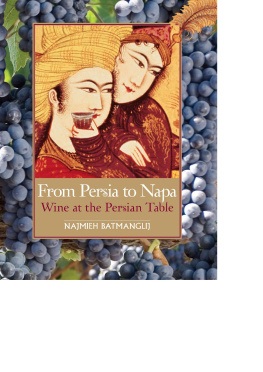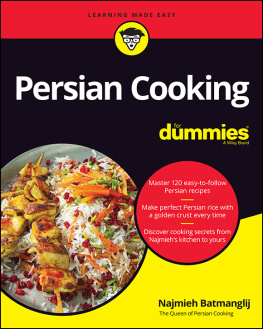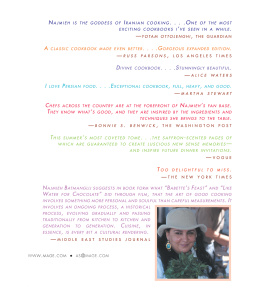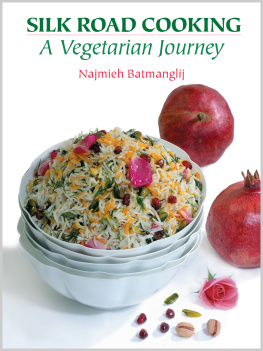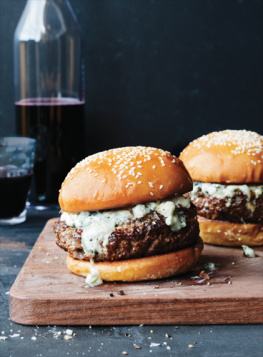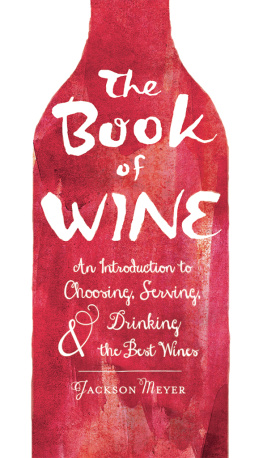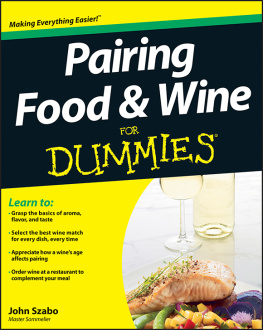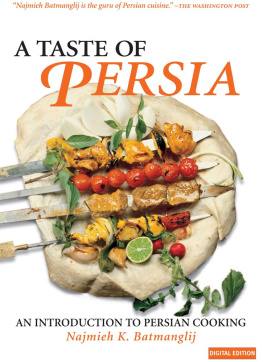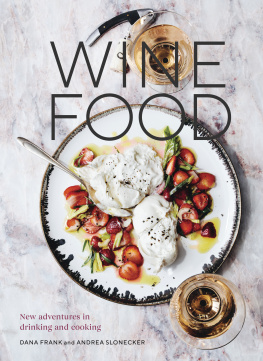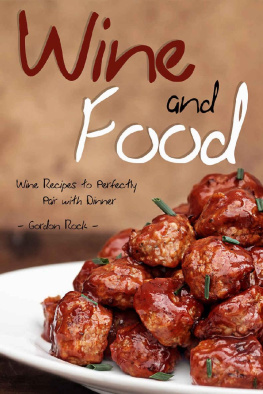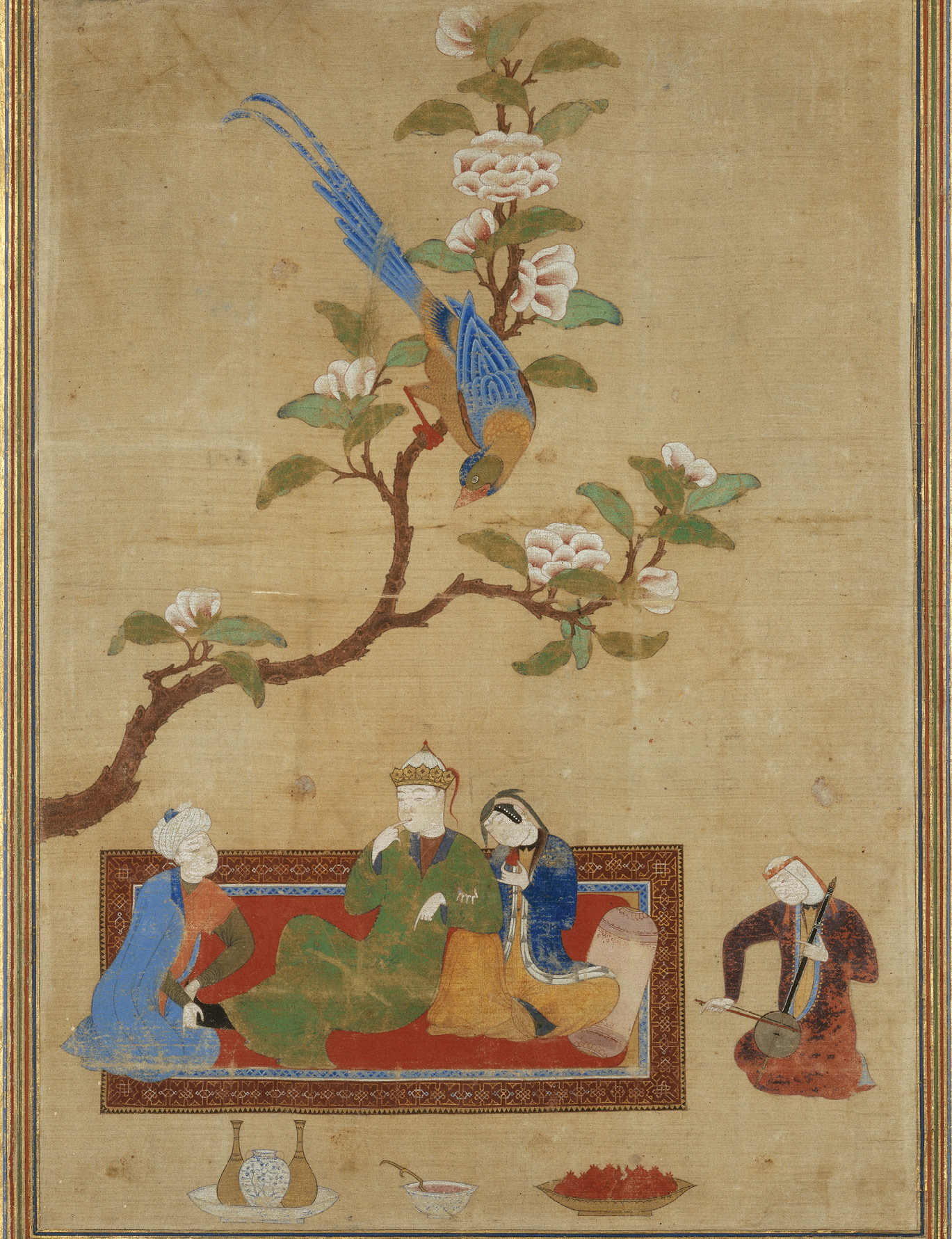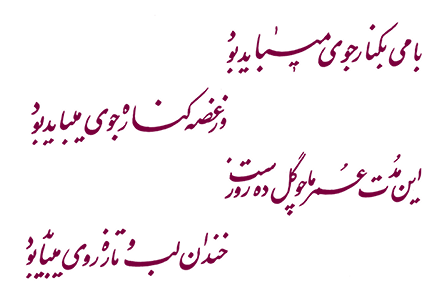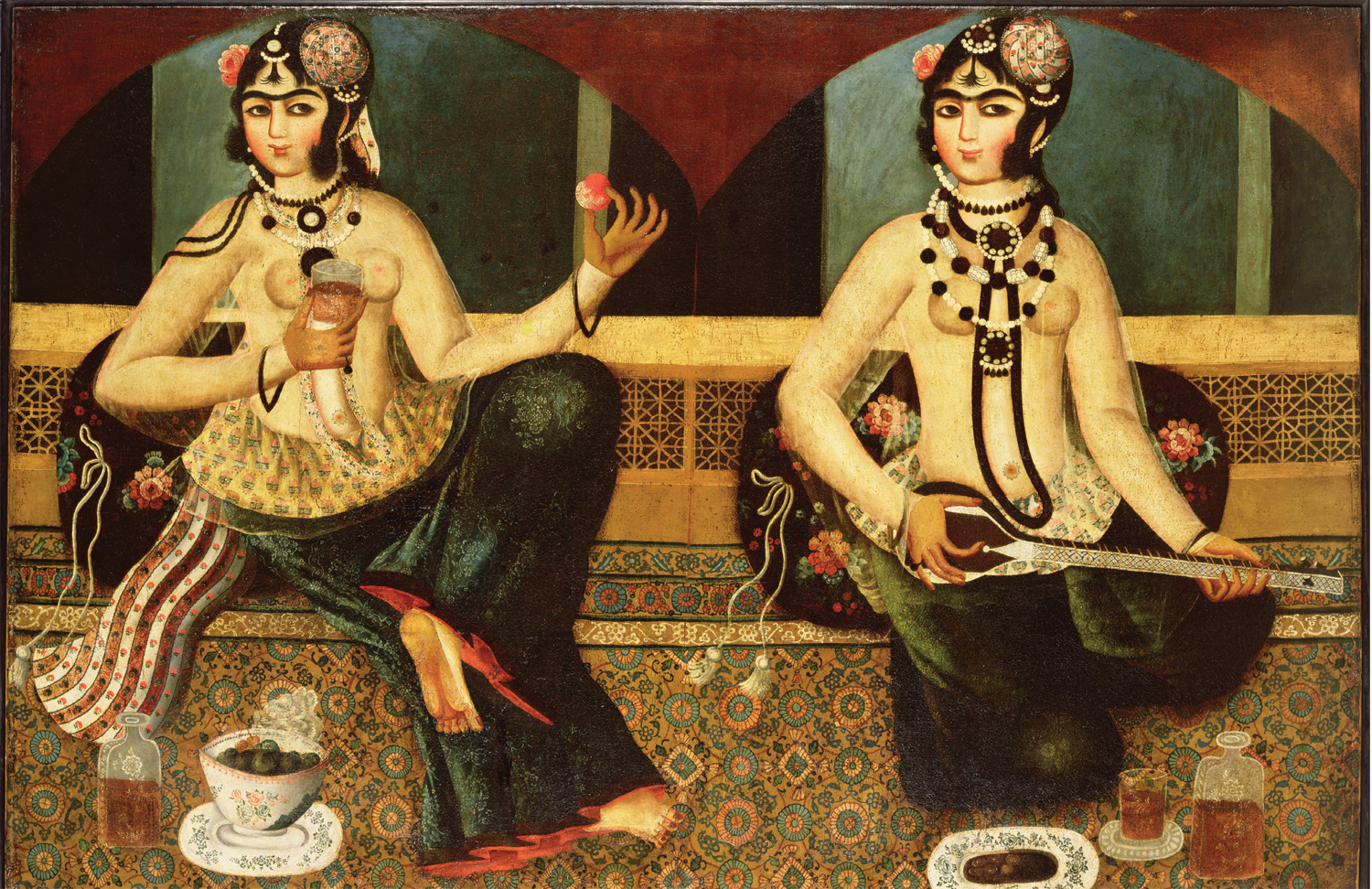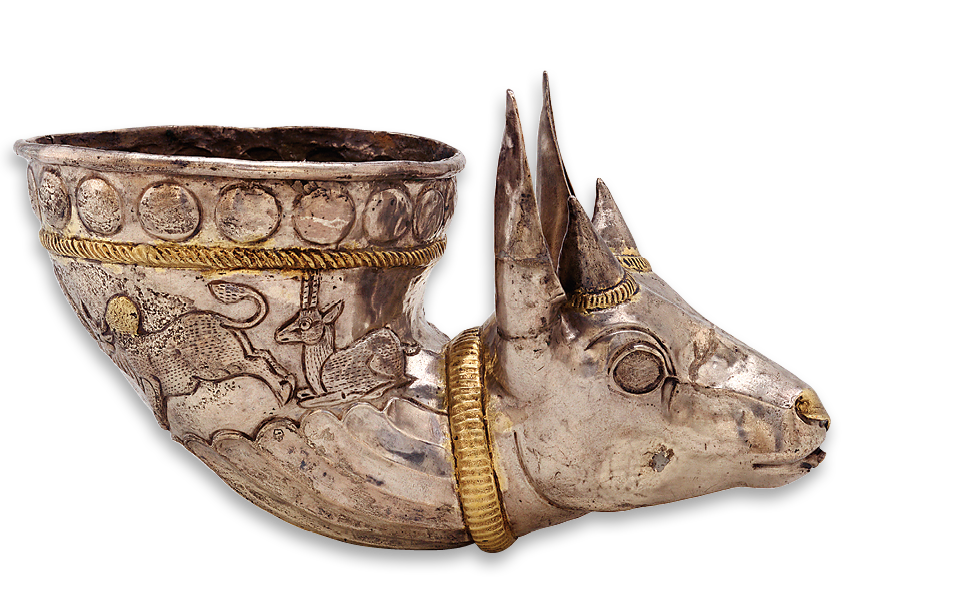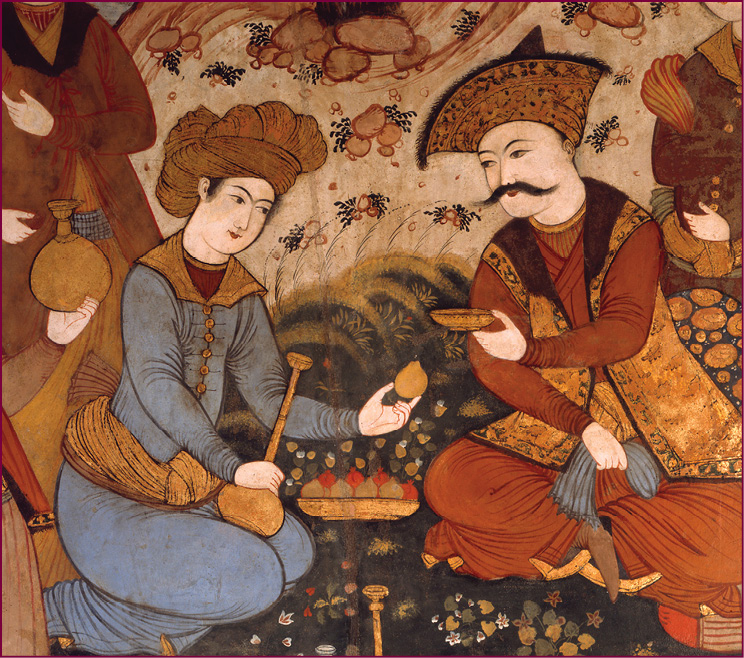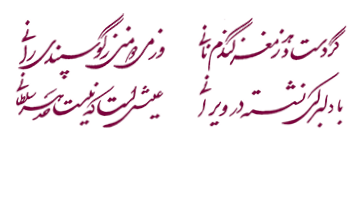
FROM PERSIA TO NAPA
WINE AT THE PERSIAN TABLE
Najmieh Batmanglij
with
Wine and Persian Poetry
Dick Davis
Pairing Wine with Persian Food
Burke Owens

MAGE PUBLISHERS
Copyright 2006, 2020 Mage Publishers
friendship village, maryland
Full credits on pages 244245
All rights reserved.
No part of this book may be reproduced
or retransmitted in any manner whatsoever,
except in the form of a review, without the
written permission of the publisher.
library of congress cataloging-in-publication data
Batmanglij, Najmieh
From Persia to Napa : wine at the Persian table / Najmieh Batmanglij ; wine and Persian poetry [by] Dick Davis ; pairing wine with Persian food [by] Burke Owens.
p. cm.
Includes index.
ISBN 1-933823-00-3 (hardcover : alk. paper)
Cookery, Iranian. Iran--Social life and customs. Wine and wine making. I. Davis, Dick, 1945- II. Owens, Burke. III. Title.
TX725.I7B365 2006
641.5955--dc22
2006003666
isbn 978-1-949445-17-6
epub ISBN 978-1-949445-17-6 mobi ISBN 978-1-949445-19-0
first ebook edition
visit mage online
www.mage.com
as@mage.com
'
To the Persian poets, with admiration and gratitude.
With wine beside a gently flowing brook this is best;
Withdrawn from sorrow in some quiet nook this is best;
Our life is like a flowers that blooms for ten short days,
Bright laughing lips, a friendly, fresh-faced look this is best.
Hafez/Davis
CONTENTS
Introduction
Najmieh, do they drink wine in Iran ?
Thats a question I have often been asked by colleagues in the culinary world and students in my cooking classes. The answer is surprising. It is also complex.
For thirteen centuries, the dominant religion in Iran has been Islam, which forbids the making, selling or drinking of alcoholic beverages. But the Quran the holy book of Islamisnt entirely consistent about this matter, and the strict- ness of the proscription has varied greatly over time. Even today, under a theocratic government, wine is drunk in many Iranian homes as a private pleasure. Some of it is made locally, although the vintners and wine merchants are non-Muslims. The present situation in the country is not unlike that of the United States during Prohibition, when a constitutional amendment banning alcoholic beverages was widely but cautiously ignored.
I grew up in Tehran in a traditional household. Whenever I get up early in the morning, I remember my fathers gentle predawn whisper: Its time to pray. Eating and drinking ceremonies figure in my most vivid childhood memories, but alcoholic beverages were not a part of them. Our drinks were tea and sherbets.
It was different at my aunts house, however. Every afternoon around five oclock, she would prepare a table in a shady spot in the garden. There,
FROM PERSIA TO NAPA i
noghl-e mey a term used since ancient times in Iran to refer to small dishes of sweets, savories and fruits that accompanied wine drinkingwould be displayed and wine would be brought out for her husband and his friends. Just as we had afternoon tea ceremonies at our house, my uncle had his wine ceremony. It was his medicine, my mother would say.
When I was eighteen, I came to the United States for university studies. I continued to pray three times a day in the privacy of my own room. During those undergraduate and graduate school years, I had many friends from various backgrounds, and all were interested in Persian culture. Most had heard of Omar Khayyama brilliant thirteenth-century astronomer and mathematician as well as a poetand they usually could quote a snippet or two from the Edward FitzGerald translation of his Rubaiyat:
A book of Verse underneath the Bough,
A Jug of Wine, a Loaf of Breadand Thou
Beside me singing in the Wilderness
O Wilderness were Paradise enow!
Shah Abbas, greatest of the Safavid Dynasty kings, receives wine from a saqi (wine server) in his harem in a seventeenth-century mural.
i INTRODUCTION
I explained to my friends that wine drinking was a frequent theme of Persian verse in that era, seen as a source of solace for the difficulties of this world and a means of apprehending the next.
For me, though, wine was still only an abstraction, since I didnt drink, not even a beer. That changed after I returned to Iran and married. My husband, Mohammad, was a wine enthusiast, and when we received a gift of some fine champagne from American friends, he persuaded me to try it. Thus I had a rather splendid introduction to wine: My first taste was vintage Taittinger Blanc de Blanc. Later, as post-Revolution refugees in the south of France, we made our own wineChteau Zal we called it, Zal being our first son, whose feet we used for pressing the grapes, the traditional method in France.
In the years since then, I have written extensively about Persian cuisine, one of the worlds oldest cooking traditions. (The word Persian in English comes from the name of the province of Parsalso called Farsin southwestern Iran, which was the center of the first Persian empire. In a cultural context, it is used interchangeably with Iranian, derived from Aryan, an ancient term for the Indo-European languages spoken by tribes in the region.) This part of the world played a key role in shaping other cuisines. It lay midway along trading routes, collectively known as the Silk Road, that linked Asia and Europe in ancient and medieval times. In addition to the back-and-forth traffic of trade goods, the routes served as conduits for the exchange of ideas, tastes and customs, including those related to eating and drinking.
The Near East was also where the domestication of the grapevine occurred, although that happened long before the Silk Road existed. Its cultivation spread in all directions from there, finding great favor in the land that would be home to the Persians. The fruit of the vine continues to hold a prominent place in Persian cuisine. A combination of grapes, bread and cheese was a full meal for many working Iranians during my childhood. Fresh grapes are eaten before meals and afterward, and fresh grape juice is a popular drink. Some grapes are dried to produce raisins. Unripe grapes ( ghureh), the juice ( ab ghureh) and the reduced juice ( rob-e ghureh) are all used as souring agents. Grape molasses ( shireh-ye angur), produced by boiling down grape juice, serves as a sweetener (it was used before sugar was known). In all, hundreds of varieties of grapes are grown in Iran at presentcultivated in practically every part of the country except along the hot southern coast. Yet wine, regarded in many cultures as the supreme gift of the vine, is proscribed.
Next page
